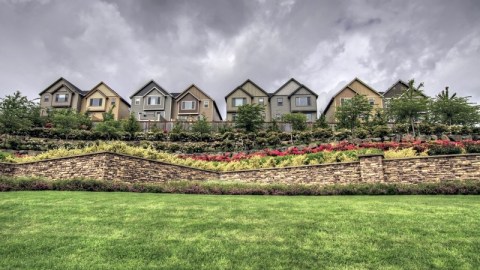Is It Time to Re-Architect a New Suburbia?

For years, architects and urban planners have occupied themselves with dreaming up clever new ways to revitalize America’s deteriorating urban centers – transforming warehouses into upscale lofts, finding creative new uses for aging infrastructure and creating new incentives for artists and other members of the creative class to re-locate to cities. Is it now time now for them to turn their attention to re-architecting and re-imagining another part of America suddenly plagued by a deteriorating quality of life, declining incomes and eroding home values? Yes, I’m talking about the suburbs.
After nearly four years of a McMansion mortgage crisis and new waves of Creative Class immigration into America’s leading cities, it’s time to confront a strange new phenomenon: the hollowed-out suburbs. It may not quite be the apocalyptic vision offered up by Christopher Leinberger in The Atlantic three years ago during the height of the mortgage crisis – when it was feared that empty McMansions would turn into crack dens – but it’s still bracing stuff. Indeed, the psycho-demographic pendulum appears to have shifted across America. According to most surveys, people prefer to live in walkable neighborhoods and sustainably designed communities — places that have all the perks of big-city living, as well as the goodness of green parks and good schools.
So what would it take to create these types of walkable, sustainable suburbs on a national scale?
Two architectural & design firms, Diller Scofidio + Renfro and Droog, recently hosted the Open House 2011 event where they re-imagined the classic suburban utopia – Levittown in Long Island, New York – and brainstormed ways that the suburban dream could be revitalized. They looked at what has worked in places like Manhattan and Brooklyn — places where dogwalkers, drycleaners, bohemian cafes, 24-hour bodegas and countless delivery services ease the strain of everyday urban life — and came up with suburban equivalents.
Welcome to the Future Suburbia, a place where there are “domesticity museums,” backyard farms with takeout windows, sun roofs for tanning, and (ha!) Attention Clinics – places where suburban dwellers pay upwards of $100/hour to learn from other suburban dwellers who have re-branded themselves as service providers. According to the hosts of Open House 2011, the goal was to uncover low-cost, low-investment ways to replicate the same kind of thriving DIY, off-the-radar economy found in America’s urban centers..
What are some of the other creative ways to transform automobile-dependent Suburbia into the type of thriving live-work environments where you can bike to work, grow your own vegetables in your backyard and get your neighbors to help out with all of the little service tasks that we almost take for granted in any big urban metropolis?




